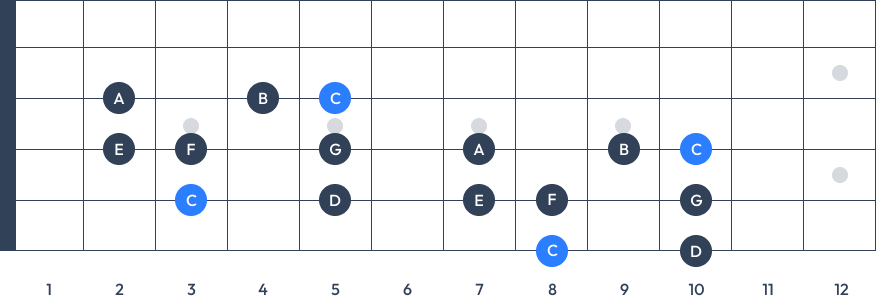Guitar Scales and Modes
Learn more about how guitar scales work and how modes interact with each other. Here is an exmaple of C major scale modes.







How Guitar Scales and Modes Work
If you understand how guitar scales and modes work, you will be a better guitar player and musician. Scales are sequences of notes played in order, while modes are different variations of the same scale.
For example, if you take the C major (Ionian) scale (C-D-E-F-G-A-B), you can create seven different modes by starting and ending on each note within that scale.
Starting from C gives you the Ionian mode, from D the Dorian, from E the Phrygian, and so on. Though the notes stay the same, the mood and sound of each mode change based on its starting point.
Each mode has a unique character. Dorian has a jazzy, minor feel, Phrygian sounds exotic, and is frequently used in the metal genre. Lydian feels bright and dreamy. So, you can create different feels based on the mode.
Here are all seven modes and notes pattern in each one of them, based on C scale:
- Ionian: C D E F G A B
- Dorian: D E F G A B C
- Phrygian: E F G A B C D
- Lydian: F G A B C D E
- Mixolydian: G A B C D E F
- Aeolian: A B C D E F G
- Locrian: B C D E F G A
How to Learn Scales on Guitar
To learn guitar scales and modes, first learn notes on the fretboard. Then start with understanding basic scale patterns. One method is to memorize the major scale pattern, especially in the key of C, since it contains no sharps or flats. From there, you can expand into other keys and modes.
Break the fretboard into small sections and practice one position at a time. Focus on both ascending and descending the scale, and say the note names aloud to strengthen your memory.
After some time, try using them in real musical situations. Jam over backing tracks, play along with songs, or create your licks. This helps you turn scales into music rather than just finger exercises.
Try taking one mode per week and explore how it sounds and feels. Over time, your fingers will know where to go, and your ears will know what to expect.